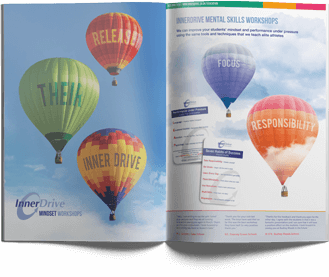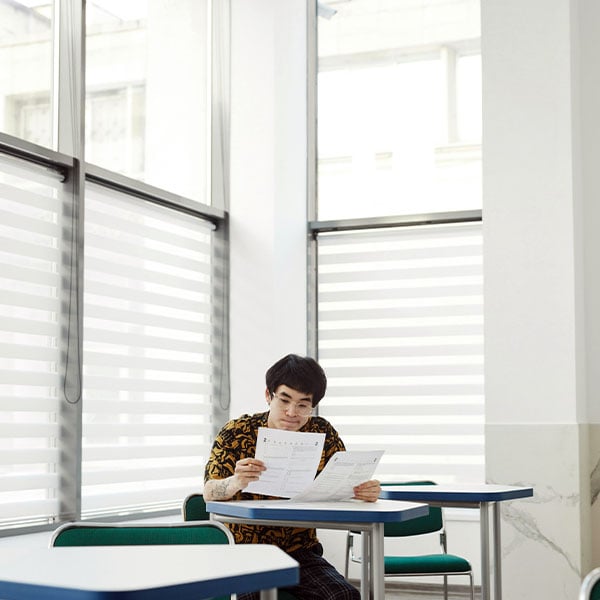Remote teaching and remote learning are the new realities for many of us. But they also pose a new set of challenges, especially for students. Many of you have never experienced such grave changes before, and we want to help you through this one step at a time.
This starts with looking at where the learning happens: your home. In order to make this transition easier, it is important that you work in the best possible way – part of this relies on your physical learning environment. When you’re used to spending most of your time in classrooms, the distractions or inadequate working spaces at home can seriously hinder learning.
It may not sound that important, but your home learning environment plays a crucial role in your academic progress. It can be tempting to attend your online classes from your bed, or complete your homework with the TV on, but these choices will have a negative impact on your learning.
So, what is the ideal home learning environment?
The Impact of Your Environment
Research shows that your physical environment can significantly influence cognition, emotions, and behaviour. This can affect your decision-making and your relationships with others. Working surrounded by clutter for example can have negative effects such as increasing your stress levels and hurting your concentration. One study found that when people felt overwhelmed by the amount of stuff around them, they were more likely to procrastinate.
On the other hand, clutter may not always be a bad thing. Evidence suggests that having a messy desk can boost creativity levels. This is based on the idea that the mess helps us to look at things from a different perspective, and that a neat desk makes us more likely to follow the norm and play it safe.
However, this shouldn’t be confused with allowing distractions. A study by Michigan State University found that interruptions as small as one text message could lead to double the number of mistakes in work. It is crucial to your productivity that you eliminate anything that may distract you whilst you’re completing a task. It is harder to regain focus once you have been distracted and this can cause stress and poor work.
Let’s see if you pass the messy desk test – watch this video and try to identify all the potential distractions on the desk. Then, find similar distractions that may be in your working environment and try to eliminate them.
What is the Right Learning Environment?
There are no hard rules you can follow when creating your learning environment, as everyone learns differently and everyone has a different surroundings at home. However, there are a few ways you can make a space that will help you. Use these tips to create a healthy study environment:
- Set a designated area for learning – Find a space away from distractions that you can use solely to study and complete homework. This can help you get into a working mindset and improve your focus. It could be a separate room or just a table that isn’t used for anything else. Whenever possible, avoid integrating your work and personal spaces as this can breed further stress.
- Keep your desk tidy – As you saw in the video, a clean and tidy work environment can boost productivity and help you focus. Put things away after you’re done with them to make the tidying process easier. Take a few minutes at the end of each study session to clear your working space to prepare for the following day. This will help clear your mind and reduce stress.
- Put your phone away – Research found that UK schools who banned mobile phones saw a 6.4% increase in their students’ grades. Keep this same rule whilst working from home to help reduce a huge potential distraction and keep your focus where it needs to be. Turning your phone off or putting it in another room during your allocated study time will help you become more productive. If you’re scared that you’ll miss something, tell your friends you’ll be unavailable between certain hours, so they’ll know not to try reaching you.
- Avoid listening to music – Or if you have to, listen to calming music without lyrics. Many studies on the subject found that music can impact your recall of information and your ability to focus. To find out more about which type of music has which effect on which type of task, read this blog.
- Maintain a routine – Having a routine allows us to divide our time and prioritise what is important. Some may find it more effective to work in smaller increments whilst some may prefer to work non-stop for a few hours. Decide what works best for you, create a schedule and stick to it. This will help you set aside time to work towards your academic goals whilst also ensuring that you take well-deserved breaks. Check out this blog to find out how to maintain new habits.
Final Thoughts
Finding the right learning environment for yourself may take some time. If you need a little bit of clutter to foster creativity, or find it easier to work in 30 minute intervals, then incorporate this into your home learning environment. Follow the tips above to ensure that you’re being as productive as you can be by eliminating distractions, improving concentration, and creating a comfortable area for you to learn in.







